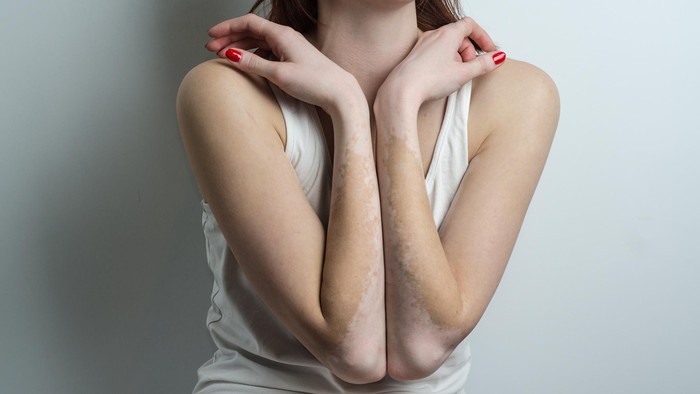In the last decade, many studies have been conducted that suggest the cause of vitiligo is indeed oxidative stress. As per a study concluded by the US National Library of Medicine and National Institutes of Health, oxidative stress (simply known as an overaccumulation of hydrogen peroxide, i.e. H2O2, in the skin) is involved in the pathophysiology of vitiligo. This might hint that oxidative stress triggers vitiligo in the first place.
Low catalase is found in vitiligo, which fails to protect the cell from oxidative damage by triggering reactive oxygen species (ROS). This ROS accumulation is able to induce lipid peroxidation, DNA damage, increased production of proinflammatory and the loss of functionality of enzymes that plays a key role in melanogenesis. Certain environmental factors such as ultraviolet radiation, toxins, and stress can also induce ROS leading to oxidative stress.
Oxidative stress is thought to be the initial pathogenic event in melanocyte destruction. However, studies that establish a link between oxidative stress and vitiligo so far have been conducted with limited sample sizes and cross-sectional design. Therefore, more studies should be conducted so that it can be established that it is oxidative stress that causes vitiligo, not autoimmunity, genetics, toxins released by nerve ending and nutrition deficiency that are considered possible vitiligo triggers by various researchers.
What existing studies suggest about oxidative stress in vitiligo
A lot of studies suggested that hypersensitivity to oxidative stress has a crucial role in determining melanocyte degeneration. Another study observed significantly high levels of superoxide dismutase (SOD) in active vitiligo cases when compared to stable vitiligo and healthy controls. Additionally, in the case of vitiligo, many experts believe that oxidative stress and autoimmunity strictly interact to determine melanocyte loss in an individual.
Treatment of oxidative stress in vitiligo
It has been suggested that people with vitiligo have low catalase levels (an enzyme that protects the cell from oxidative damage) in their involved and uninvolved epidermis alongside high levels of H2O2. A topical agent with a UVB-activated pseudocatalase can successfully remove epidermal H2O2 in vitiligo. This way, recovery of the oxidative damage can be achieved in the epidermis, which may result in re-pigmentation in white lesions.
As per some reported evidence, the use of oral and topical antioxidants in association with conventional vitiligo treatment can restore the defective antioxidant system in individuals with vitiligo. This might hint that adding a greater influx of antioxidants to the diet can slow the progression of vitiligo spread and has the potential to reverse the chronic skin disorder as well.
However, the exact role of oxidative stress in depigmentation and role of antioxidant as therapeutic agents in vitiligo can be established only after large multicentre studies.

